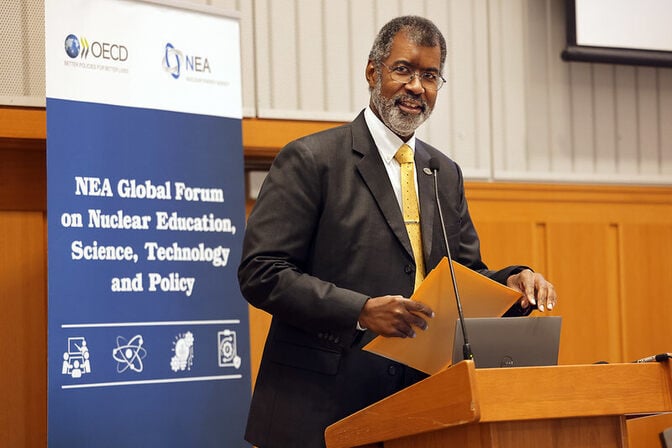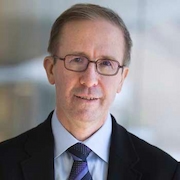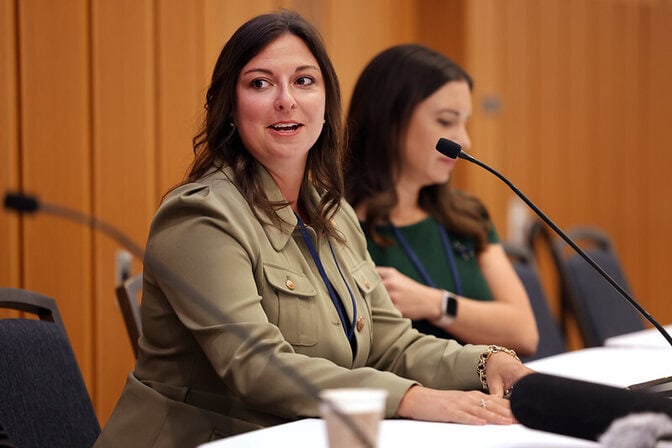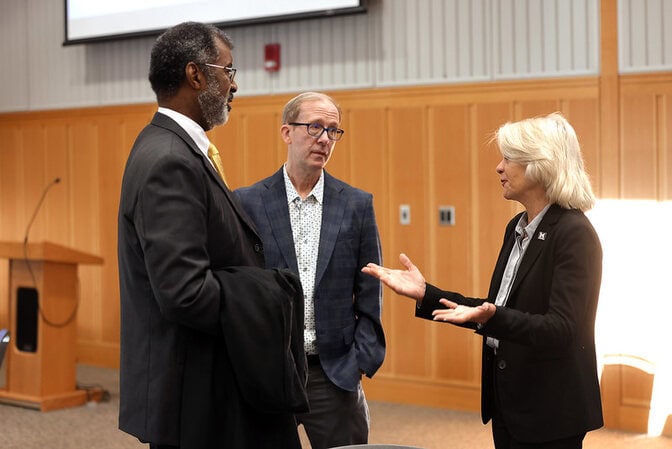
Global experts chart the future of nuclear power at U-M symposium
Building workforce will be key to growing capacity.

Building workforce will be key to growing capacity.
Experts

Glenn F. and Gladys H. Knoll Department Chair of Nuclear Engineering and Radiological Sciences
Professor of Nuclear Engineering and Radiological Sciences
Mustering the workforce to build out the largest nuclear energy expansion in three decades was the chief topic discussed at the Nuclear Energy Agency (NEA) Global Forum on Nuclear Education, Science, Technology & Policy, held at the University of Michigan.
Held Sept. 30 through Oct. 2, the forum gathered industry leaders, researchers and students to develop strategies for attracting the projected tens of thousands of nuclear engineers required to meet rapid expansion targets worldwide.

Advancing nuclear energy
from discovery to deployment
In the United States, the Trump administration has set the goal of quadrupling nuclear energy capacity by 2050, driven by growing energy demand from technology such as data centers and electric vehicles. Todd Allen, Glenn F. and Gladys H. Knoll Department Chair of Nuclear Engineering and Radiological Sciences, called the goals “extremely ambitious.” He was the chief host of the symposium and is also the Chihiro Kikuchi Collegiate Professor of Nuclear Engineering and Radiological Sciences.
“The good news is that young people are getting the message—our nuclear engineering undergraduate enrollment has gone up 25% in the past five years,” he said. “We’ve also launched a minor this year to expose more students to opportunities in the field. We anticipate there will be good jobs for them when they’re ready, including here in Michigan.”

U-M’s Department of Nuclear Engineering and Radiological Sciences also runs a variety of outreach programs to spark middle and high school students’ interest in nuclear energy.
The symposium paired nuclear energy researchers from around the world with students for mentoring and networking opportunities.
William D. Magwood, IV, the NEA’s director-general, framed growing the nuclear field as both an opportunity and a duty for the next generation of nuclear engineers, laying out a future where nuclear power spurs economic development—including in developing nations—and helps countries meet their energy security and environmental goals.”
“Energy is the key to economic development and social stability,” he said. “The nuclear energy sector has an opportunity to play a pivotal role in shaping the energy picture of the future. But if we’re going to succeed, it’s going to be largely up to those of you who are taking positions now within the industry, academia and the government. So my charge to you is to save the world. It’s just that simple.”

U-M’s expertise is also helping the state of Michigan play a leading role in new nuclear technology. At the symposium, Michigan Rep. Pauline Wendzel (R-Bainbridge Township) noted the work taking place at the Palisades Nuclear Generating Station in West Michigan. The plant’s new owner, Holtec International, restarted the reactor in August 2025 and is in the process of installing two small modular reactors at the site, which will nearly double its generating capacity.
The 50-year-old Palisades plant is the first nuclear facility in the nation to be restarted after beginning the decommissioning process, and its small modular reactors will be the first in the United States to begin commercial operation. The reactors are expected to come online in 2030. The project is backed by up to $1.52 billion in loan guarantees from the U.S. Department of Energy.
Karen A. Thole, U-M’s Robert J. Vlasic Dean of Engineering at U-M, outlined the university’s long partnership with the nuclear energy industry in her address to the symposium.
“Here at Michigan, we have a long list of firsts,” she said. “We launched the nation’s first nuclear engineering degree program, the very first student chapter of the American Nuclear Society was formed right here in 1955, and our Michigan Memorial Phoenix Project, born from the determination of students returning from World War II, was the world’s first university initiative dedicated to peaceful uses of atomic energy.”

Thole also highlighted more recent accomplishments, including the role of nuclear engineering alum Annie Kritcher’s role as lead designer in the world’s first successful fusion ignition experiment and U-M’s partnership with Los Alamos National Laboratory.
“We are committed to working together to imagine what comes next, to push boundaries, and to help ensure nuclear energy serves humanity in safe, peaceful and transformative ways,” she said.